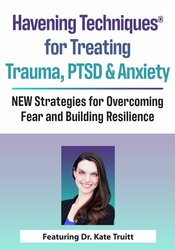G.R.O.W. Your Mind with Intention: A Resilience Practice for Kids

In our fast-paced, emotionally charged world, one of the greatest gifts we can give a child is the ability to pause, reflect, and connect to what matters most. Their brains are growing every day—and the emotional memories we help them highlight today become the roots of their resilience tomorrow.
The G.R.O.W. exercise (Truitt, 2024) is a foundational neuroplasticity practice that helps kids build an inner anchor of strength, safety, or purpose. This moment becomes a trusted resource their brain can return to—especially during times of stress, overwhelm, or doubt.
How to G.R.O.W. the Mind with Intention
G – Generate a Moment of Strength or Meaning
Invite the child to think of a time when they felt strong, calm, happy, proud, or safe.
If that’s hard to find, it’s okay to imagine it—maybe a superhero moment, a favorite book character, or a dream they’ve had.
The brain doesn’t need it to be “real” to make it real.
R – Relish & Reflect
Ask gentle, curious questions:
- “Why does this moment matter to you?”
- “What does it say about who you are or what you care about?”
- “What do you feel when you think about it?”
This reflection begins to build the bridge between memory and meaning.
O – Optimize the Experience
Help them fully savor it:
- “Where do you feel it in your body?”
- “What colors or images come to mind?”
- “Does it feel warm or cool, light or strong?”
You can add mindful touch here (like a moving self-hug or palm rubbing) to enhance safety and sensory integration.
W – Weave It into Daily Life
Now choose an anchor:
- A word or phrase (“I am safe,” “Strong like a wolf”)
- A gesture (hand to heart, superhero pose)
- An image (a rainbow, a favorite animal, a color)
This anchor becomes their Resilience Target (Truitt, 2025)—a moment they can come back to, again and again, to feel grounded, strong, and whole.
Why G.R.O.W. Works
Every time we guide a child to reflect on what’s good, strong, or meaningful, we activate and strengthen those neural pathways. When paired with gentle, intentional touch and repetition, we’re not just creating a memory—we’re cultivating a living, breathing roadmap for resilience.
Coming Next: Now that the child has their Resilience Target, my next blog will show you how to strengthen it using a powerful brain-building practice called the Creating Possibilities Protocol (Truitt, 2022). Stay tuned!
Citations:
Truitt, K. (2022). Healing in Your Hands: Self-Havening Practices to Harness Neuroplasticity, Heal Traumatic Stress, and Build Resilience. PESI Publishing & Media.
Truitt, K. (2024, January 12) Healing in Your Hands with Self-Havening Workshop: Harnessing Neuroplasticity to Heal Traumatic Stress and Build Resilience with Dr. Kate Truitt. (Online Workshop conducted via Zoom).
Truitt, K. (2025, January). The Foundational Training in the NeuroTriad Model [Professional training workshop]. The Truitt Institute. Conducted via Zoom.

What do you do when a patient is hijacked by their emotional brain?





